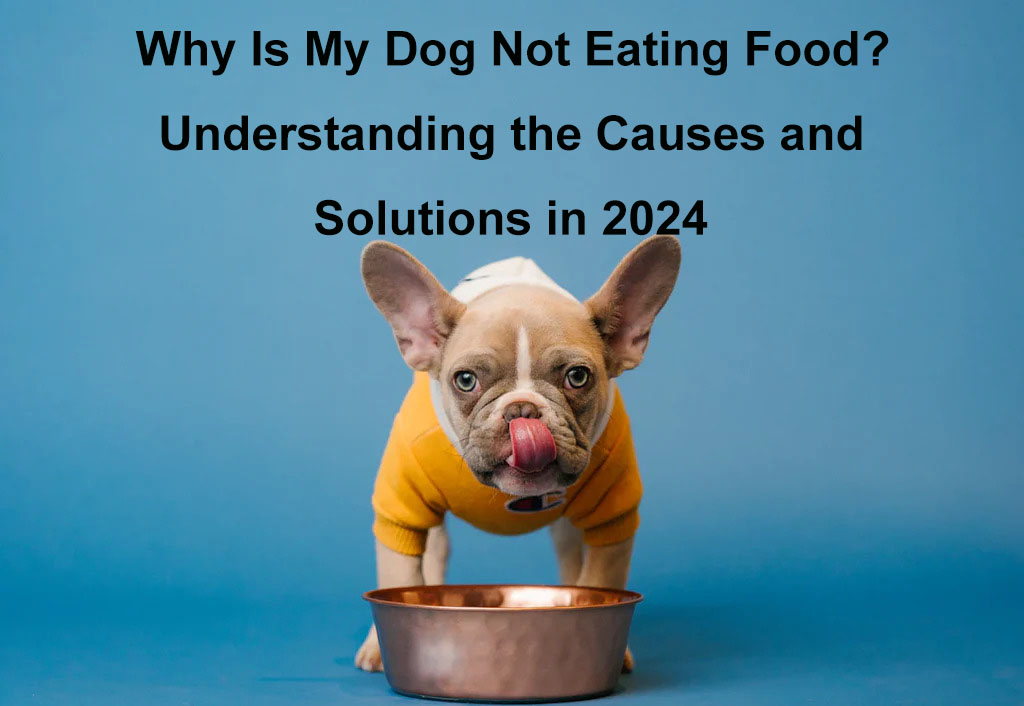As a dog owner, it can be concerning when your furry friend suddenly refuses to eat. A dog’s appetite can fluctuate for various reasons, and understanding why your dog isn’t eating can help you address the issue effectively. In this article, we’ll explore the common causes of appetite loss in dogs, how to identify the problem, and what steps you can take to encourage your dog to eat again.

Common Reasons Why Dogs Stop Eating
1. Illness or Pain
One of the primary reasons dogs may refuse to eat is due to illness or pain. Conditions such as dental issues, gastrointestinal problems, or systemic diseases can significantly affect a dog’s appetite. Signs to watch for include:
- Lethargy
- Vomiting or diarrhea
- Excessive drooling
- Signs of pain (whining, reluctance to move)
If your dog shows any of these symptoms alongside a lack of appetite, it’s crucial to consult your veterinarian as soon as possible.
Read Also:Ibomma Telugu Movies
2. Change in Environment or Routine

Dogs are creatures of habit. Changes in their environment, such as moving to a new home, changes in family dynamics, or even alterations in daily routines, can lead to stress and anxiety. Stress can manifest as a reduced appetite.
3. Food Preferences
Dogs can be quite particular about their food. If you’ve recently changed your dog’s food or introduced a new flavor, they might not be as enthusiastic about eating. Dogs can also develop preferences over time, leading to a disinterest in previously enjoyed foods.
4. Age Related Changes
As dogs age, their nutritional needs and taste preferences may change. Senior dogs might require different types of food or softer textures that are easier to chew. Age related health issues, such as dental problems or decreased sense of smell, can also affect appetite.
5. Medication Side Effects
Certain medications can suppress a dog’s appetite. If your dog has recently started a new medication, check with your veterinarian to see if appetite loss is a known side effect.
6. Behavioral Issues
Sometimes, dogs may refuse to eat as a behavioral response. This can occur if they are feeling stressed, anxious, or even spoiled. If your dog has learned that they can hold out for treats or table scraps, they may choose not to eat their regular food.
Read Also: The Best Basenji Yodels – Best Guide 2022
How to Encourage Your Dog to Eat

If your dog isn’t eating, it’s important to approach the situation thoughtfully. Here are several strategies you can try:
1. Consult Your Veterinarian
Before attempting any remedies, consult your veterinarian. They can help rule out any underlying health issues and provide guidance tailored to your dog’s specific needs.
2. Create a Comfortable Eating Environment
Ensure that your dog’s eating area is quiet, comfortable, and free from distractions. Sometimes, a change of scenery can encourage your dog to eat.
3. Stick to a Routine
Dogs thrive on routine. Try feeding your dog at the same time each day and limit the time food is left out. After 15 20 minutes, remove the food if it’s not eaten. This can help establish a regular eating pattern.
4. Enhance the Food’s Appeal
Make your dog’s food more enticing by:
- Mixing in Toppers: Add a small amount of wet food, broth, or dog safe vegetables to their dry food.
- Warming the Food: Slightly warming the food can enhance its aroma, making it more appealing.
- Trying Different Brands or Flavors: If your dog has become disinterested, consider switching to a different food that might excite their taste buds.
5. Limit Treats and Table Scraps
If your dog is accustomed to receiving treats or table scraps, it may be beneficial to reduce these distractions. Ensure they are hungry at mealtime by limiting additional snacks.
6. Monitor Their Weight
Keep an eye on your dog’s weight and overall health. If your dog continues to refuse food for more than 24 hours, it’s essential to consult your veterinarian. Extended periods without food can lead to serious health issues.
7. Consider Stress Management Techniques

If stress or anxiety is a contributing factor, explore methods to alleviate your dog’s stress. This may include:
- Providing a safe space
- Engaging in regular exercise
- Using calming products like pheromone diffusers or anxiety wraps
When to Seek Veterinary Help
While occasional loss of appetite can be normal, there are certain situations that warrant immediate veterinary attention:
- Prolonged Refusal to Eat: If your dog refuses food for more than 24 hours.
- Accompanied Symptoms: Signs of illness such as vomiting, diarrhea, or lethargy.
- Sudden Changes: A sudden change in appetite in an otherwise healthy dog.
Conclusion

A sudden lack of appetite in dogs can be concerning, but understanding the potential causes is the first step in addressing the issue. Whether it’s due to illness, stress, or changes in routine, there are various strategies you can employ to encourage your dog to eat again. Always consult your veterinarian for tailored advice and support, ensuring your furry friend stays healthy and happy.
Read Also: When Is An Aussiedoodle Full Grown – Best Guide in 2022